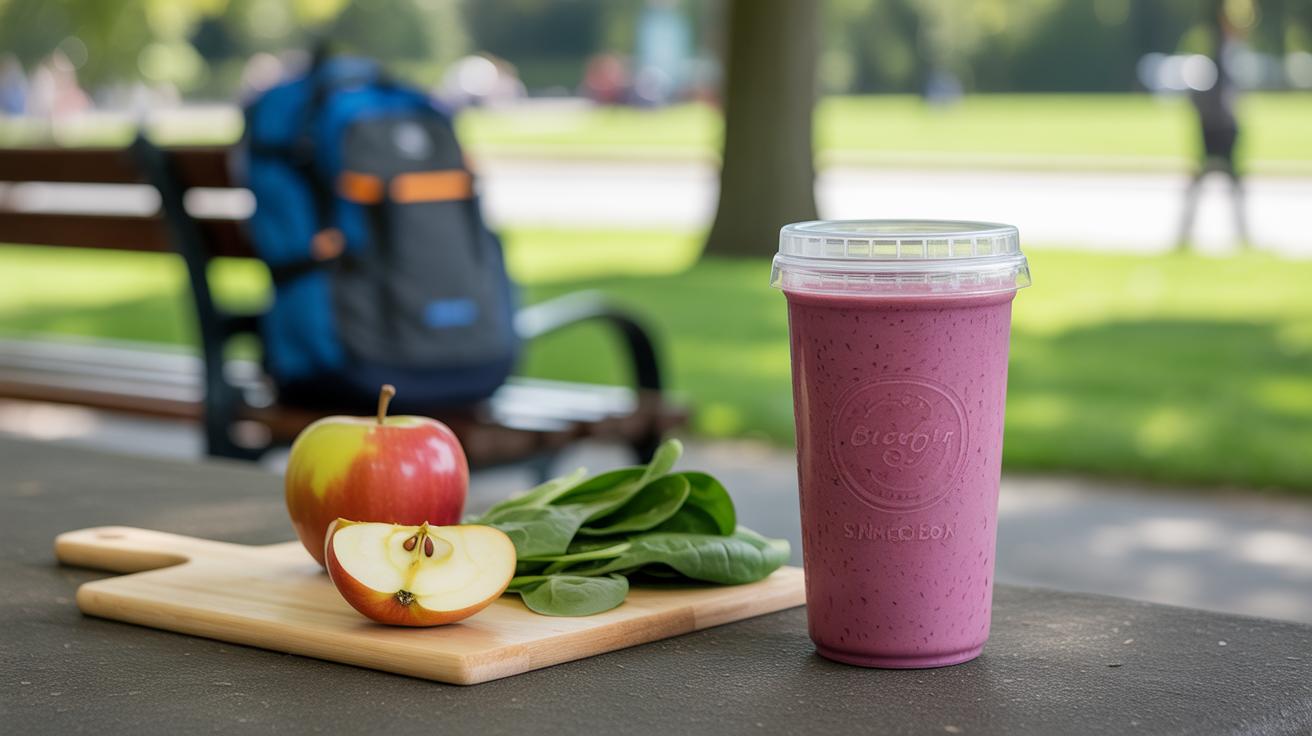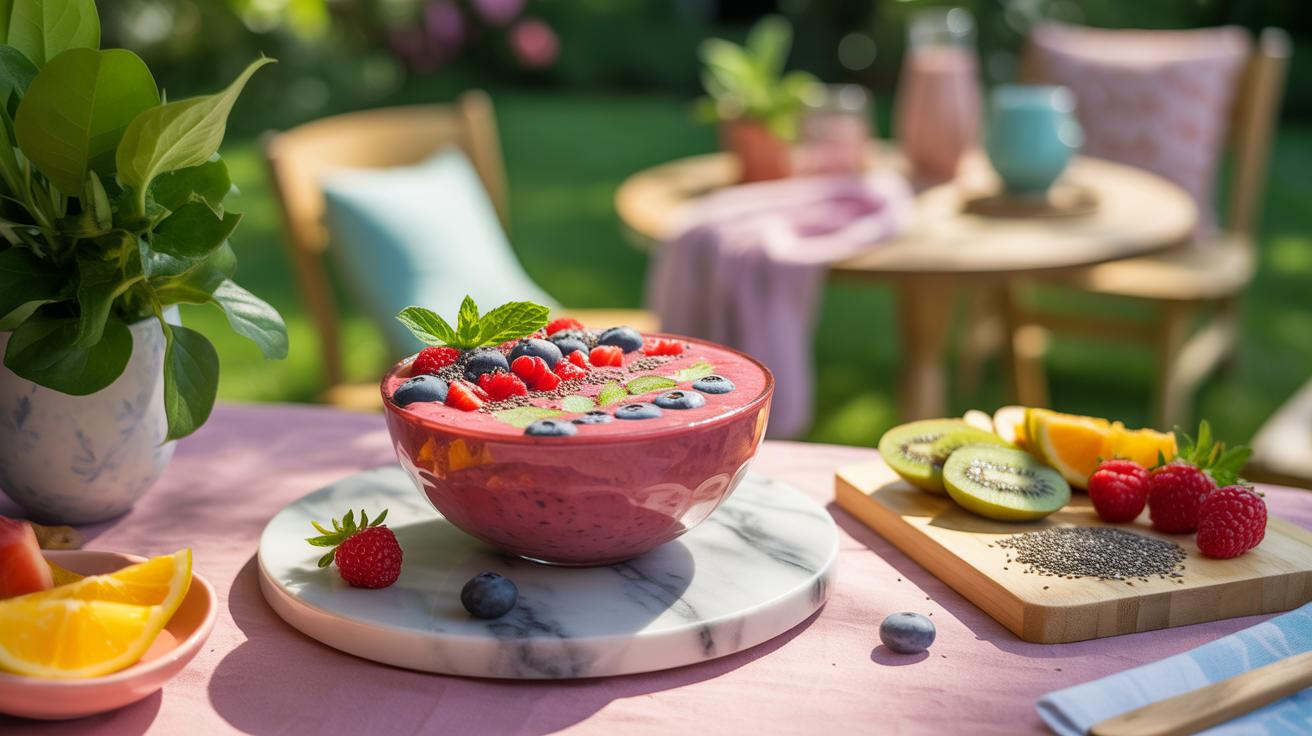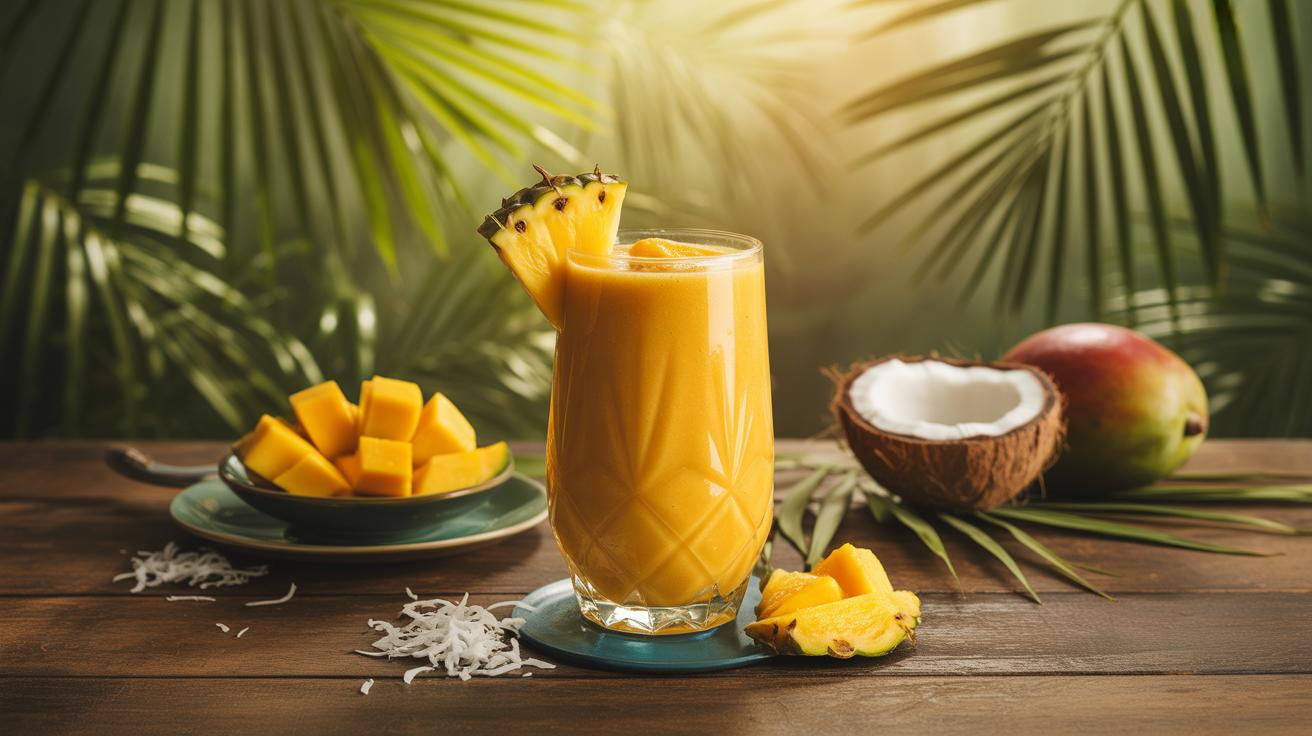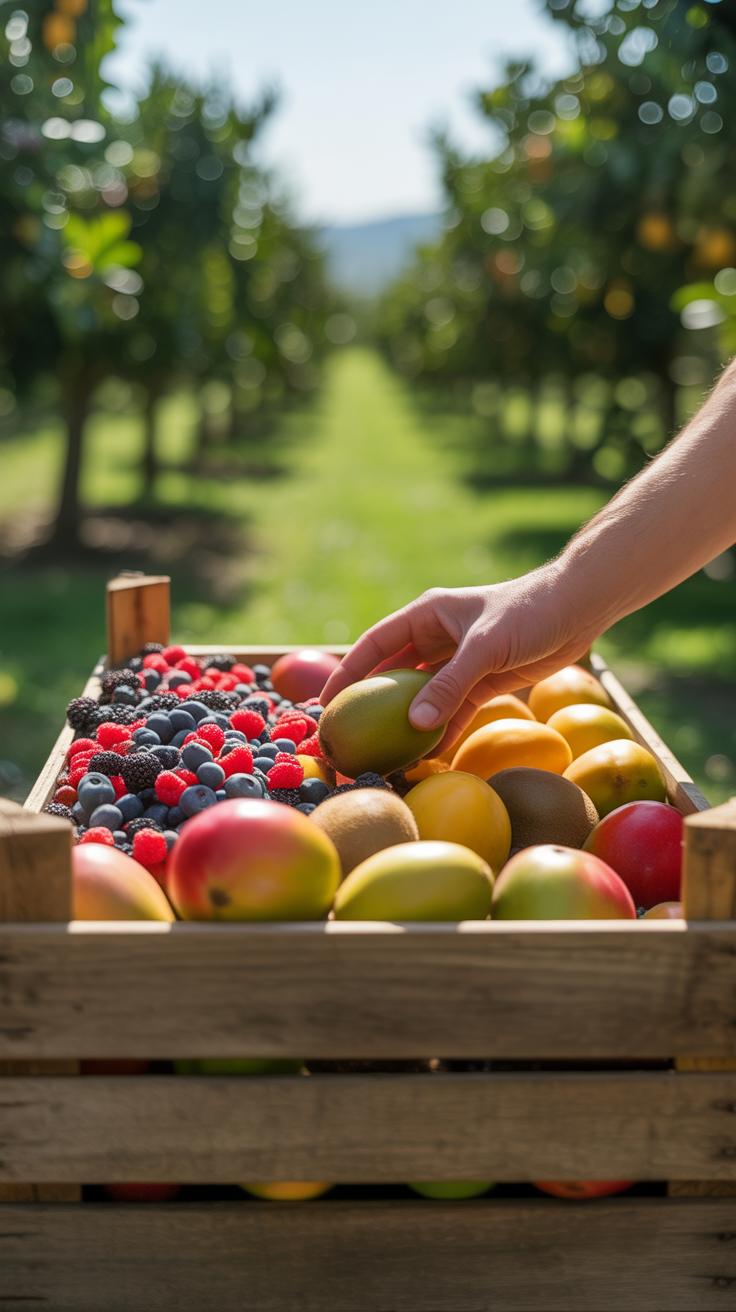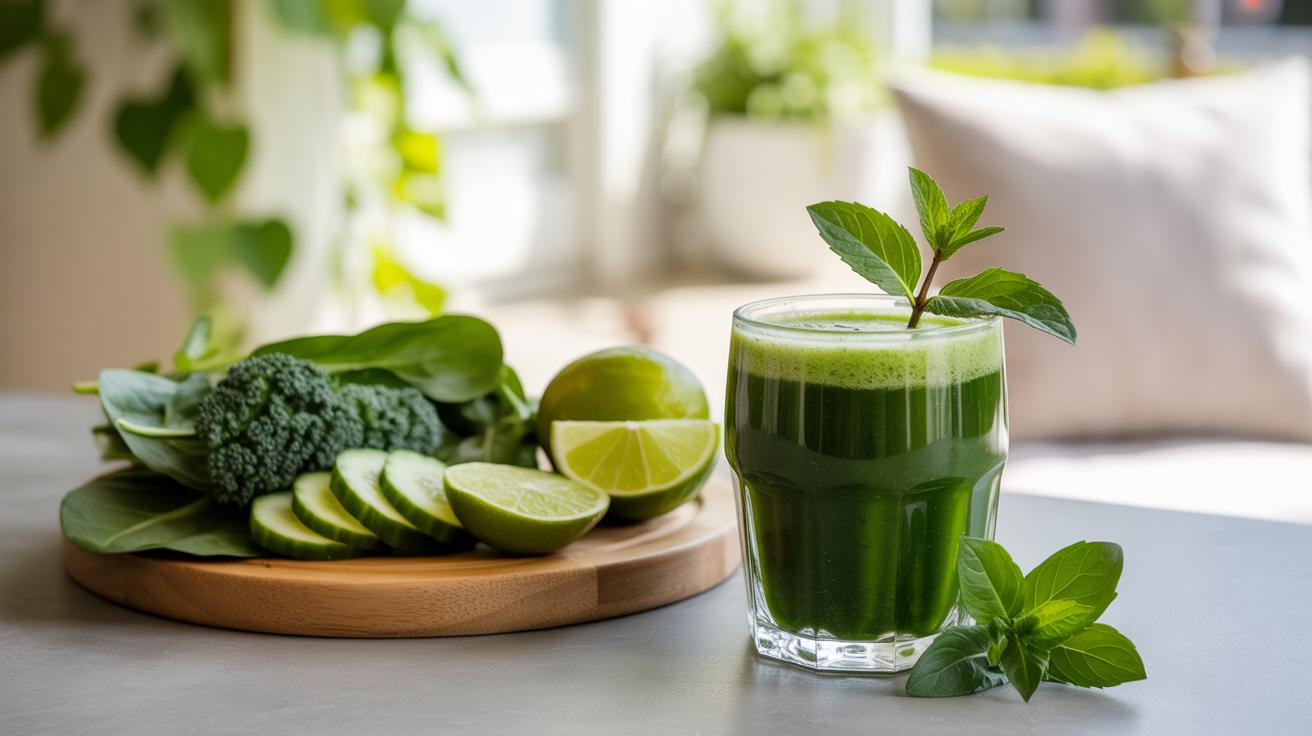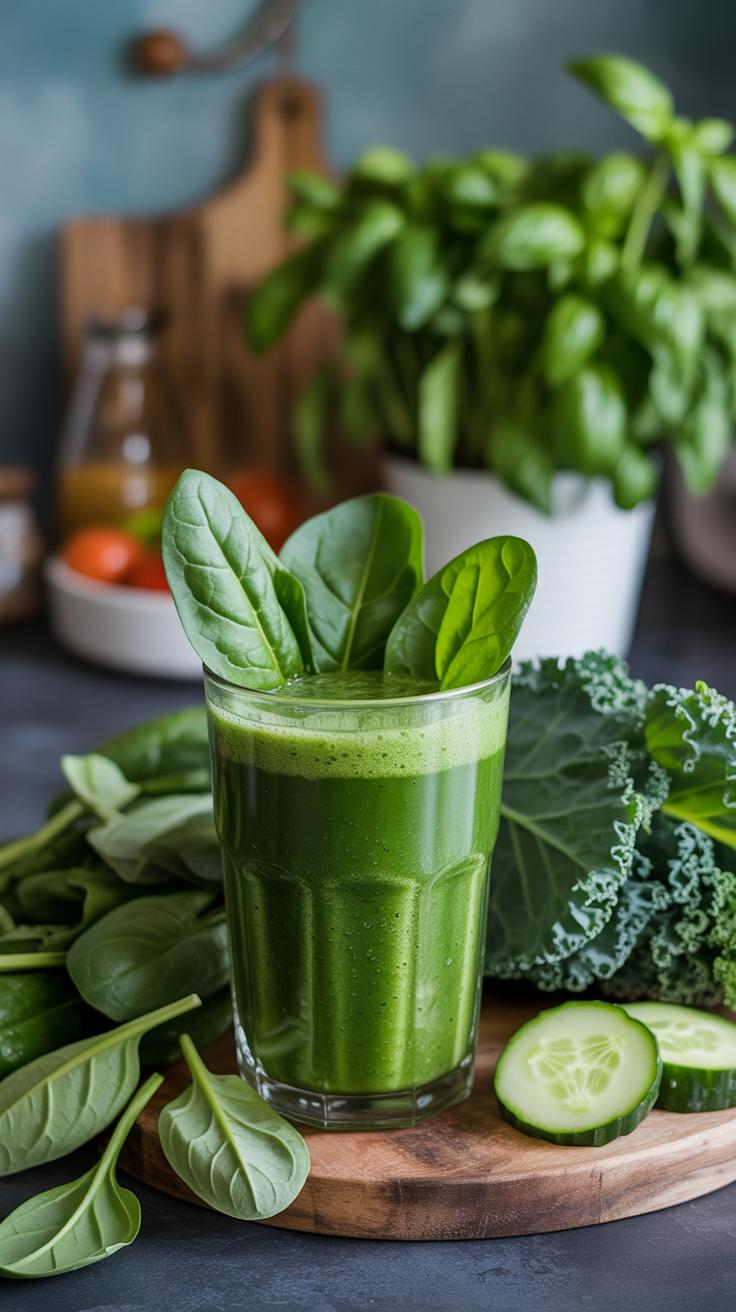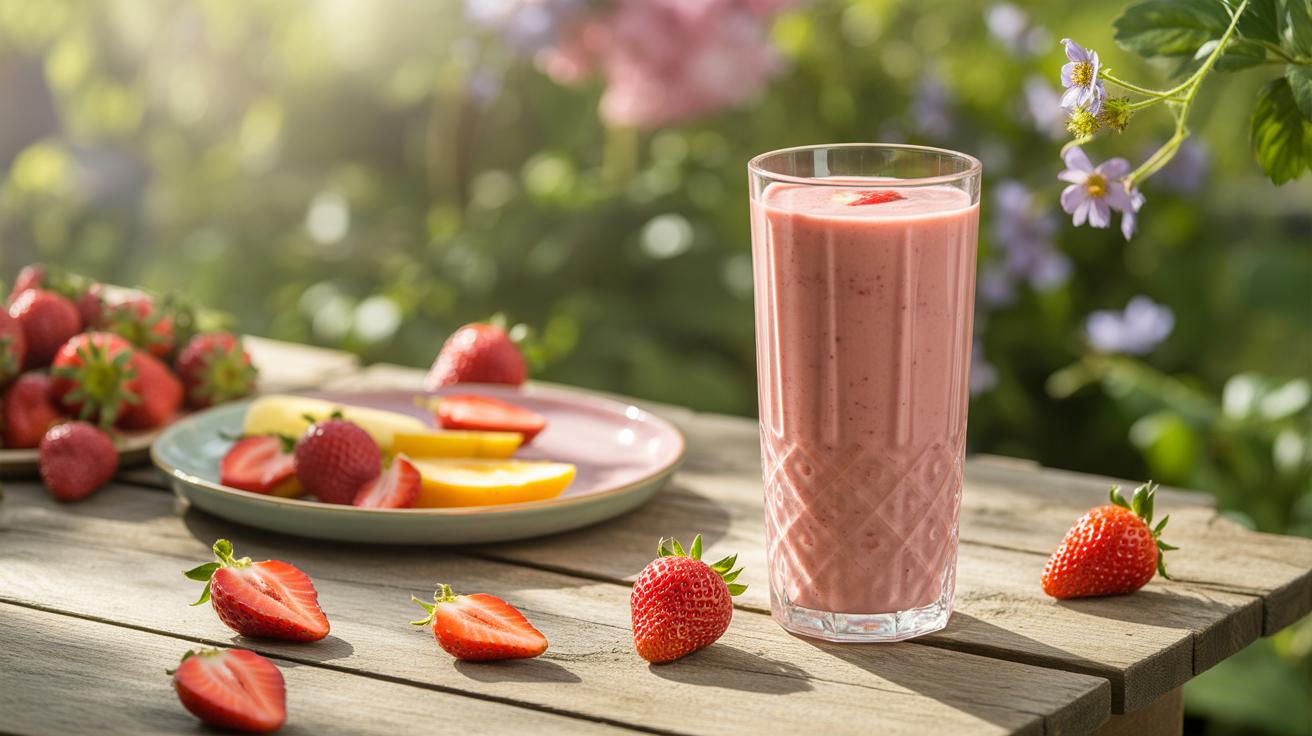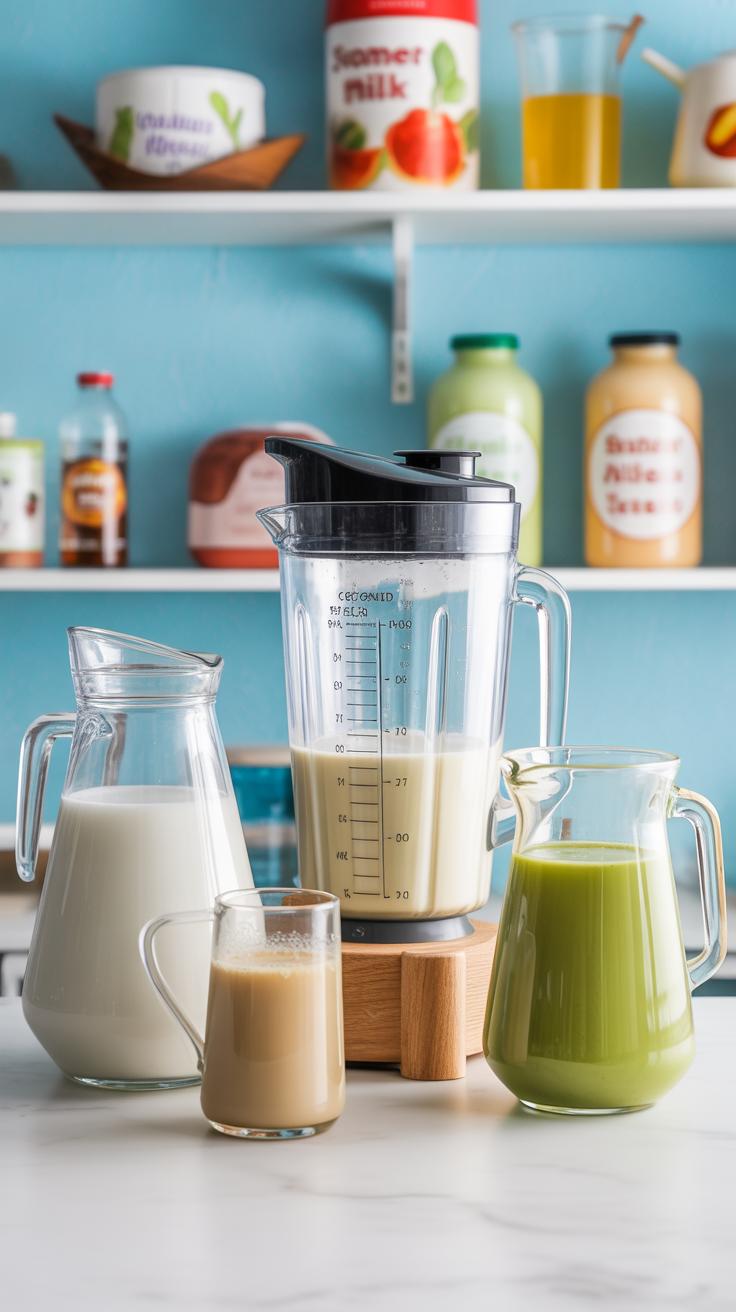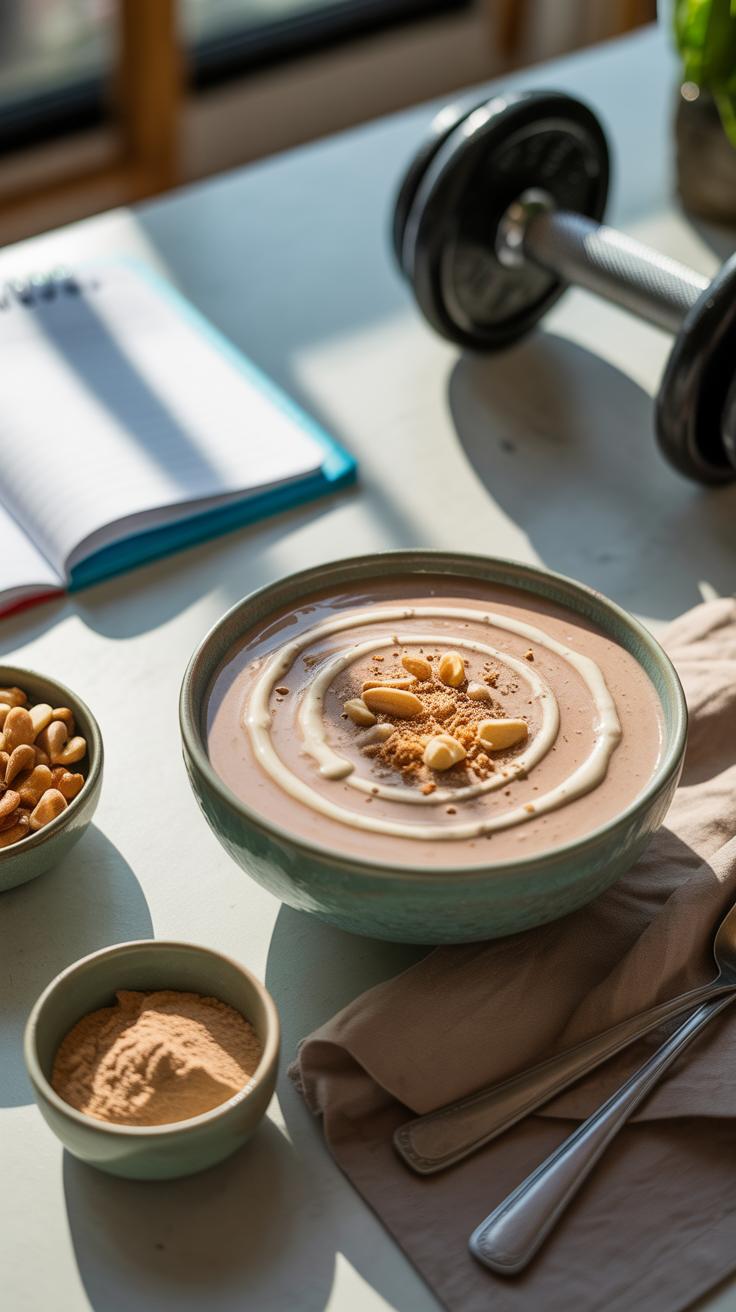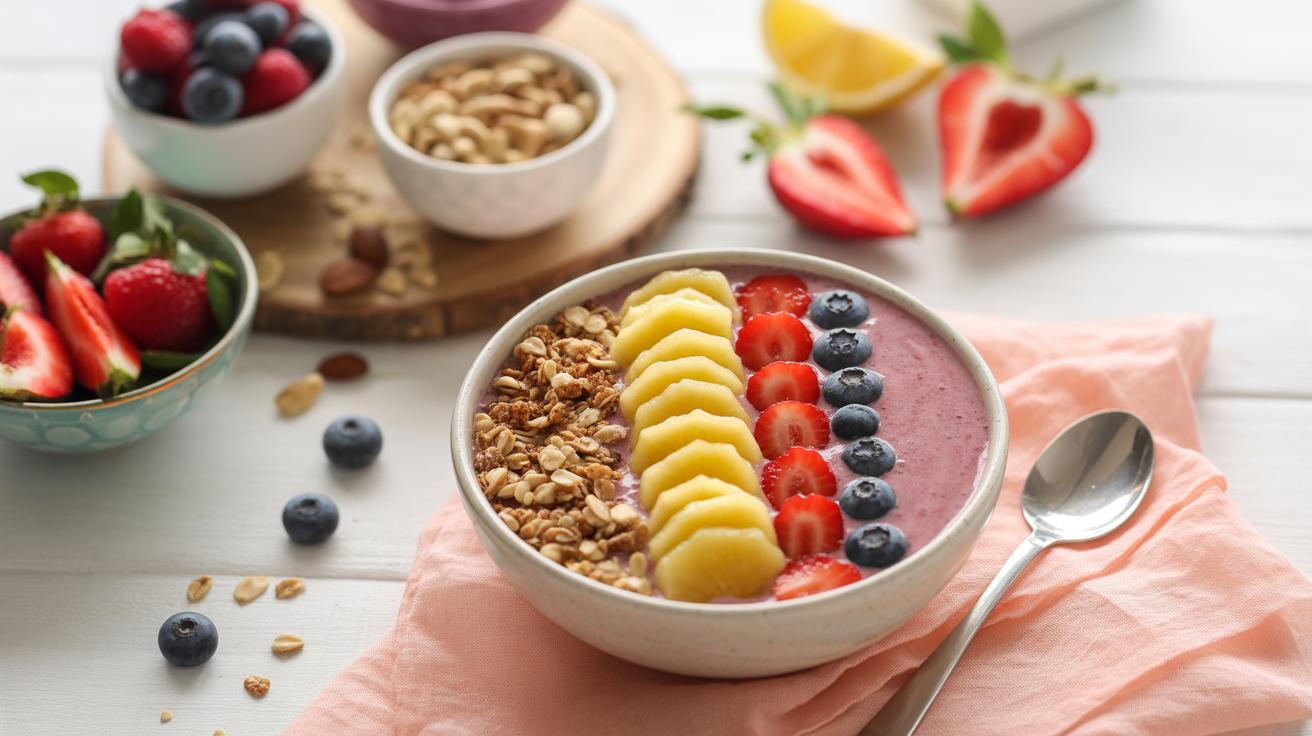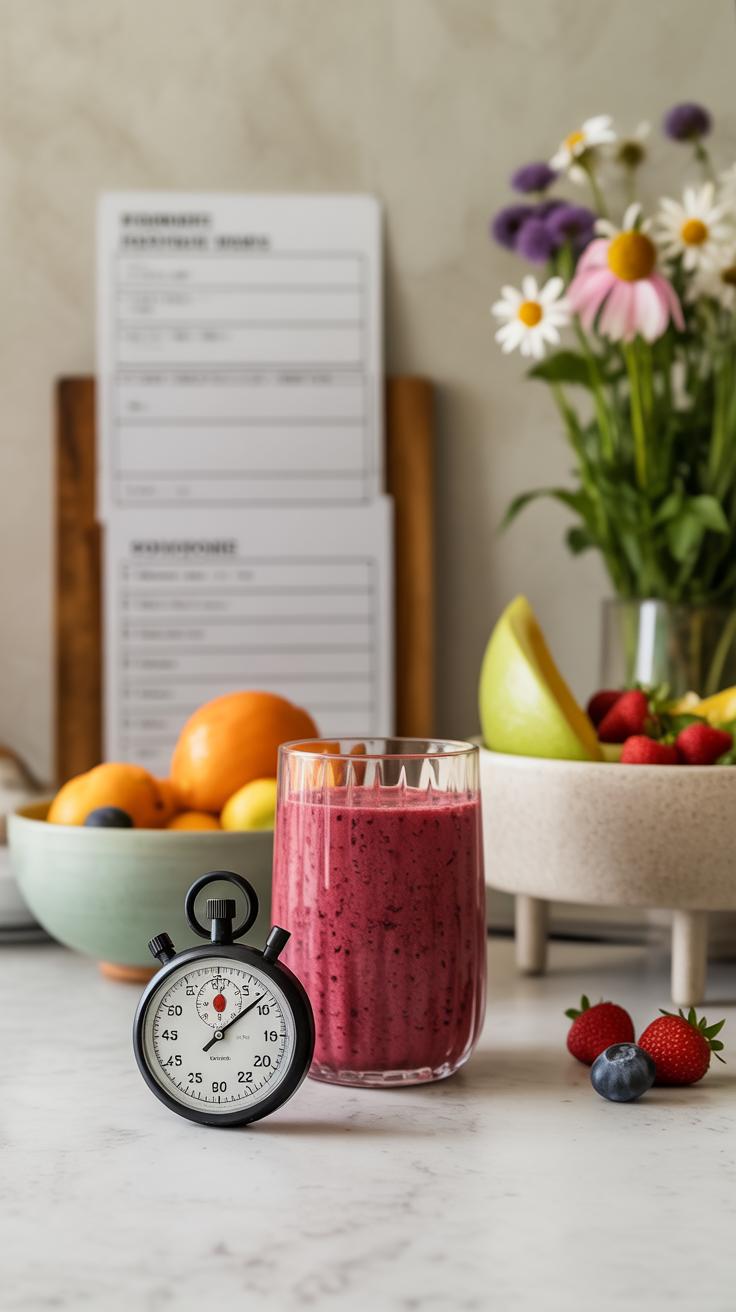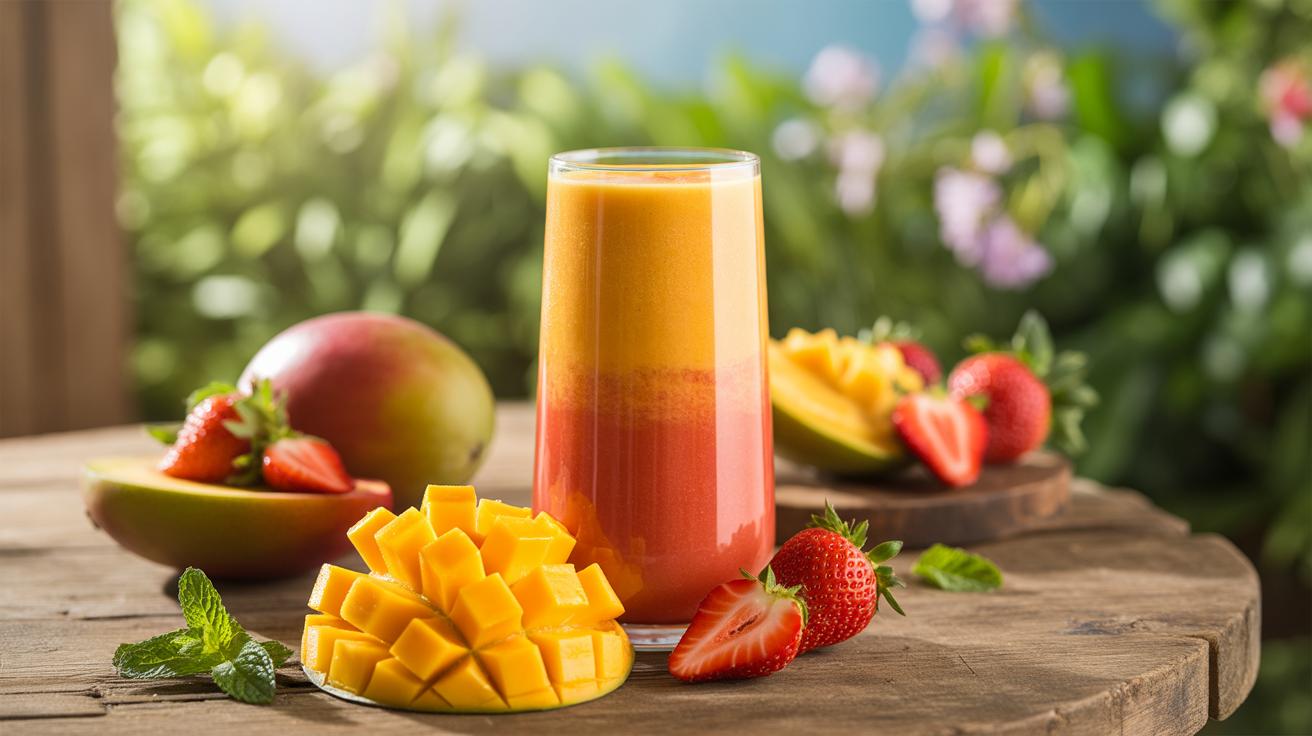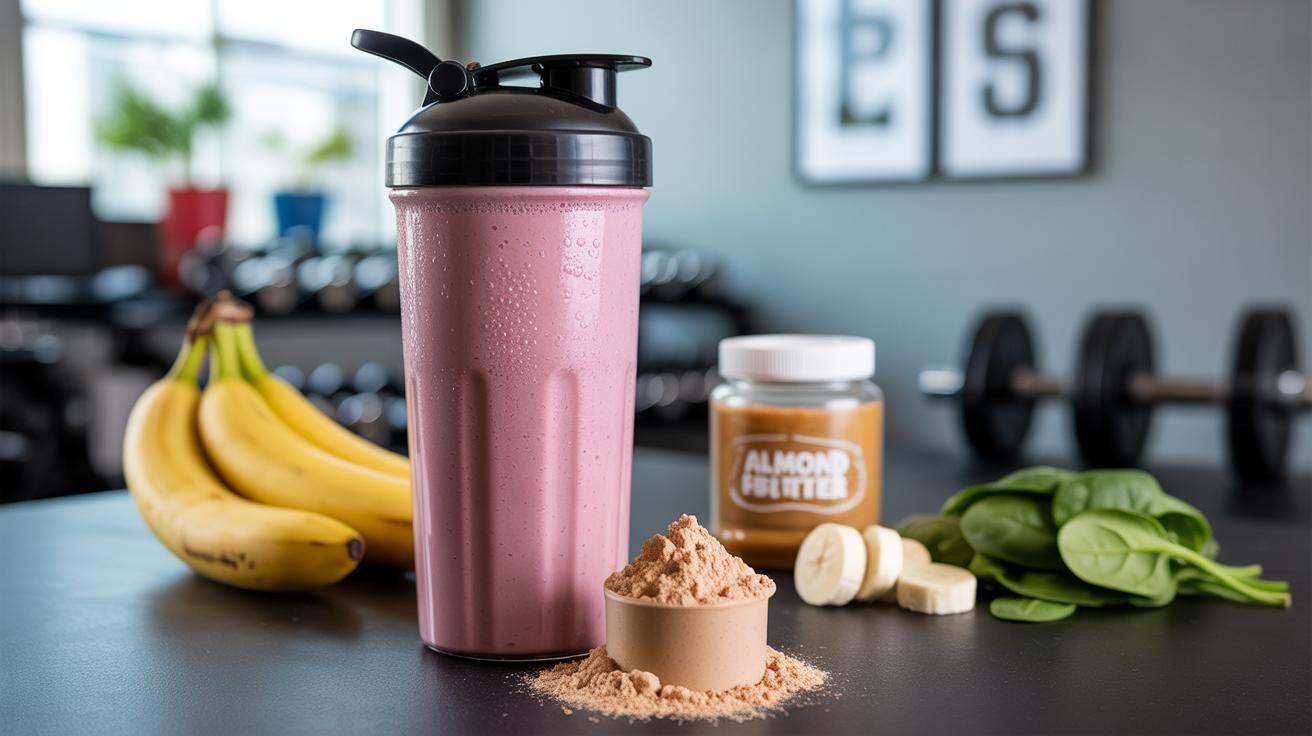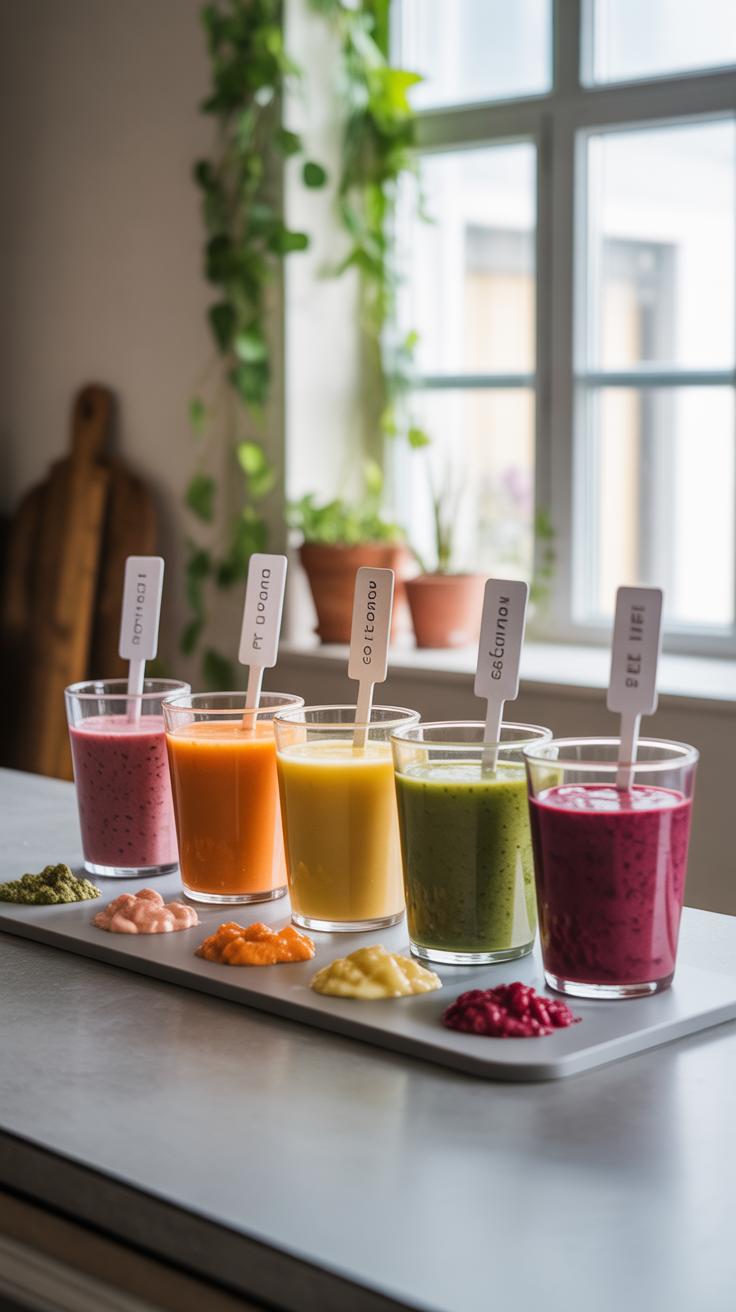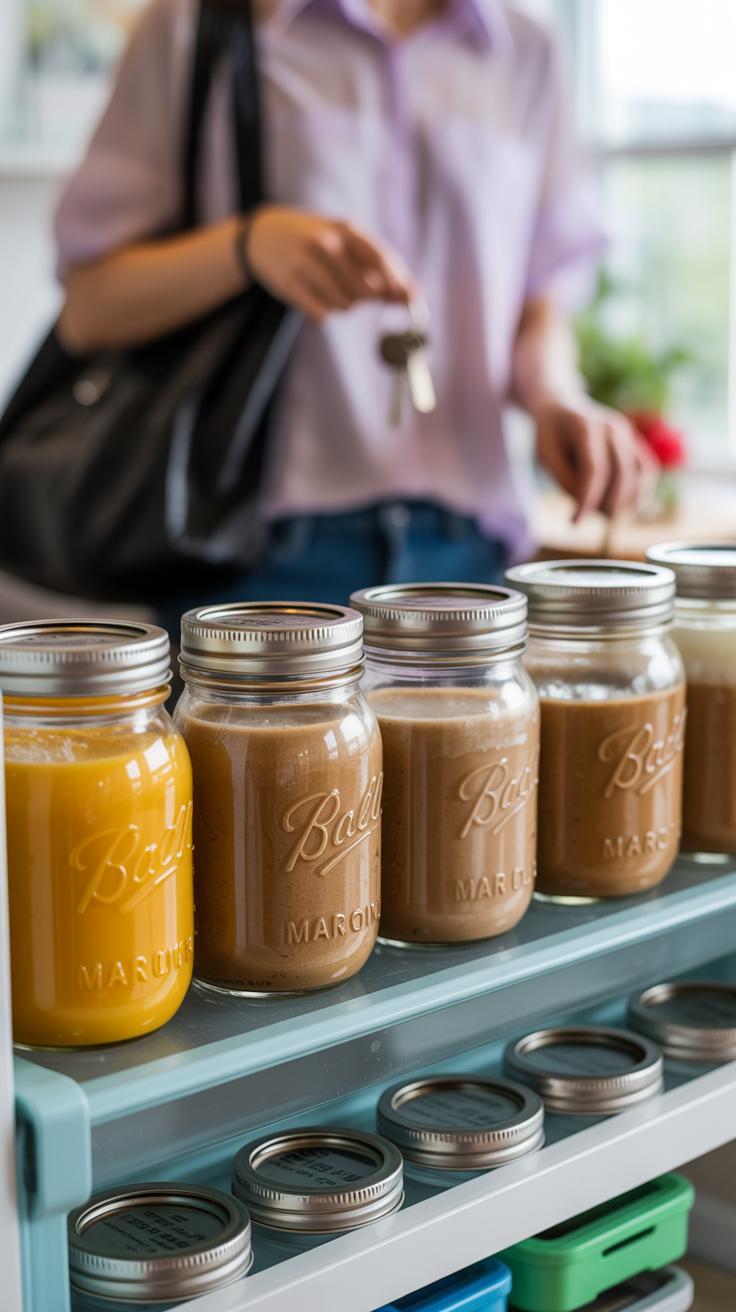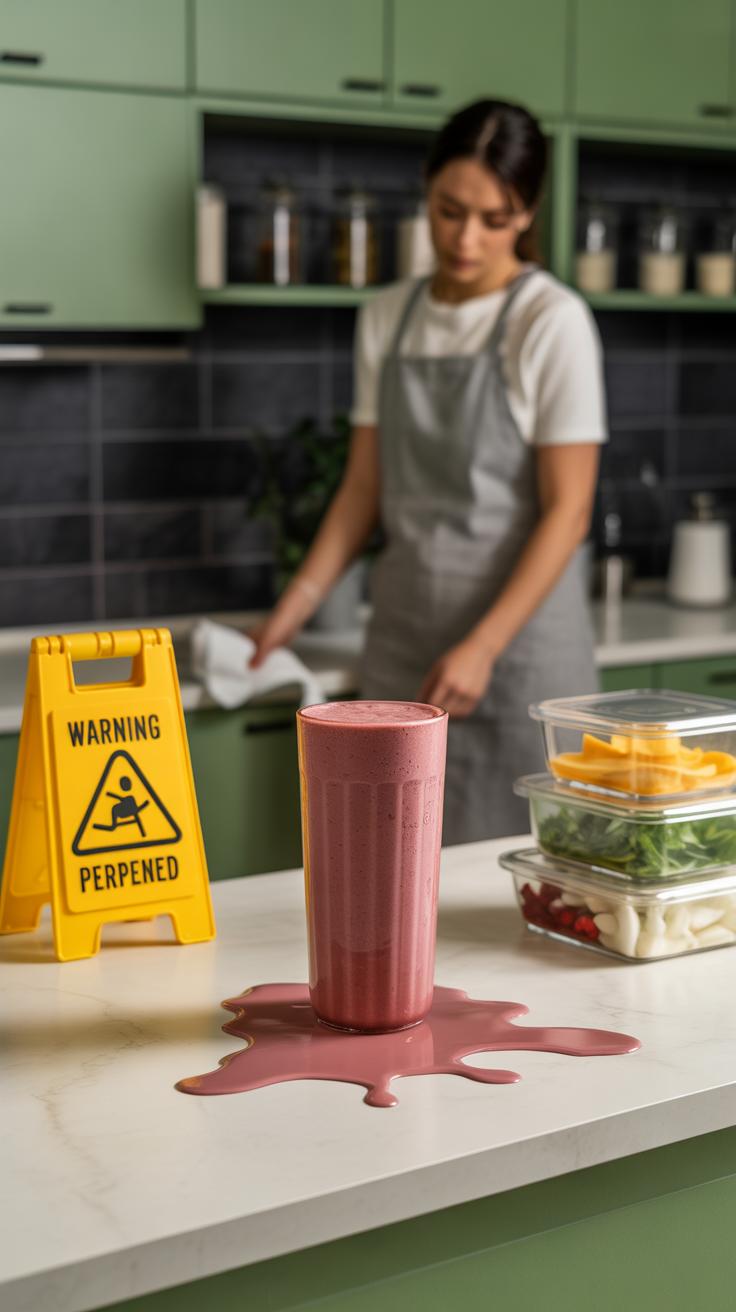Introduction
Starting your morning with a healthy fruit smoothie can set a positive tone for the entire day. Fruit smoothies are quick to prepare and provide your body with essential vitamins, minerals, and hydration. These drinks offer a balanced mix of carbohydrates, fiber, and protein that fuel your energy and support digestion. Whether you are rushing out the door or planning a relaxed morning, smoothies fit perfectly into your routine.
This article explores a variety of healthy fruit smoothie recipes designed for busy mornings. You’ll learn how to choose ingredients, blend flavors, and customize smoothies to suit your tastes and nutritional needs. We will also cover practical tips and tricks to enhance the health benefits of your smoothies while keeping them delicious and easy to make.
Understanding the Nutritional Value of Fruit Smoothies
Fruit smoothies bring together a mix of vitamins, minerals, fiber, and macronutrients that can fuel your morning in a simple way. Each fruit adds something special—like vitamin C from oranges that helps your immune system, or potassium from bananas which supports your muscles and heart. The fiber in fruits slows digestion, keeping you full longer and helping blood sugar stay steady, which is nice if you don’t want a mid-morning crash.
Besides vitamins and minerals, fruit smoothies also contain natural sugars, which provide quick energy without the heaviness that some breakfasts cause. If you add a bit of protein, maybe from yogurt or nuts, the smoothie turns into a balanced meal that fuels you through busy mornings. I’ve tried mornings without breakfast, and honestly, smoothies feel less heavy but still satisfying. That’s the benefit—they’re easy to digest, yet nourishing.
Key Nutrients Found in Common Fruits Used in Smoothies
Let’s think about some typical smoothie fruits and what they bring: bananas are rich in potassium, helping to keep blood pressure in check and muscles working smoothly. Berries like strawberries and blueberries load your smoothie with antioxidants and vitamin C—those are important for your skin and immune defense. Oranges add more vitamin C and a dose of folate, which helps with cell growth.
Fiber is an essential piece too, found in most fruits, and it’s great for digestion. For example, raspberries offer a high amount of fiber, which may surprise some. This fiber doesn’t just help your gut, it can even aid in balancing cholesterol. Thinking about these nutrients might make you look differently at your morning smoothie, beyond just tasting good.
How Smoothies Fit Into a Healthy Diet
Fruit smoothies fit well into a balanced diet, especially if you need something quick and nourishing. They hydrate—it’s partly water, after all—and provide energy fast. This can be helpful if you’re rushing out the door or need to fuel a workout.
Portion size matters, though. A smoothie that’s too large can be more sugar than you’d expect, especially if you add juices or sweeteners. Roughly 8 to 12 ounces is a good target to keep it light but filling enough to stave off hunger. Pairing smoothies with other foods, like a small serving of oats or a handful of nuts, can round out the meal and keep your energy steady through the morning.
One of the questions I sometimes ask myself is whether smoothies replace meals or just complement them. It might depend on your appetite that day or your activity level. In any case, they’re a handy way to get nutrients quickly, without needing much preparation. You might find they fit best as part of your overall morning routine instead of the entire meal every day.
Choosing the Best Fruits for Your Morning Smoothie
Picking the right fruits for a morning smoothie can make a big difference in taste and energy level. You want fruits that blend easily, give a pleasant natural sweetness, and offer a quick boost without weighing you down. Bananas, mangoes, and berries often top the list because they check those boxes well.
These fruits don’t just sweeten your smoothie—they provide carbohydrates your body can quickly turn into energy. Bananas are especially useful; they blend into a creamy texture and add potassium along with that natural sugar. Mangoes bring a tropical flavor and vitamin C. Berries, like strawberries or blueberries, add antioxidants without too much sugar.
Seasonal fruits might change what you reach for. Spring and summer may invite peaches and cherries, while autumn favors apples and pears. These shifts keep your smoothies interesting and sometimes easier on your wallet. If fresh fruit feels intimidating to keep ready, frozen options can save the day.
Frozen fruits often have better texture in cold smoothies and reduce prep time. Plus, they last longer, so you won’t waste ingredients if you miss a day. Fresh fruits, on the other hand, might taste brighter and have a firmer consistency but need more careful storage. Keeping fresh berries or sliced fruit in airtight containers can make morning blending faster.
Have you noticed how different fruits affect your morning energy or mood? Sometimes it’s just about what’s easy to grab and blend quickly. Trying a mix of fresh and frozen might help discover what works best for your routine—and your taste buds.
Adding Vegetables to Boost Nutrition
Including vegetables in your fruit smoothies can really upgrade their nutritional profile thanks to extra vitamins, fiber, and antioxidants. It might seem tricky at first—vegetables aren’t the first thing you think of for a sweet smoothie—but some mild options blend in quite well without stealing the spotlight from the fruit.
Spinach is a popular choice because it has a subtle flavor and is loaded with vitamin K, folate, and iron. Kale offers a stronger taste but adds a healthy dose of vitamin C and antioxidants if you don’t go overboard. Cucumber is refreshing and light, packed with hydration and some vitamin K, but it usually slips under the radar flavor-wise.
To keep the smoothie tasty, try balancing out vegetable flavors with naturally sweet fruits like bananas, mangoes, or pineapple. A squeeze of lemon or a dash of cinnamon can help too. Sometimes using ingredients like ginger or fresh mint distracts from any grassy undertones. I’ve found that freezing the veggies along with the fruits also mellows their taste and keeps the texture smooth.
Think about how much vegetable you add—too much can overpower the drink. A handful of greens per serving is a good guideline, but you might want to experiment a bit until you find your personal balance. After all, the goal is a smoothie you’ll actually enjoy each morning while sneaking in that extra nutrition.
Choosing Liquid Bases for a Smooth Blend
Liquids play a crucial role in making your smoothie blend just right. The choice affects not just how smooth or thick your smoothie turns out, but also its taste and nutritional profile. Think about water, milk, plant-based milks, or even fruit juice—they all bring something different to the table.
Water is the simplest option. It keeps things light and low in calories, which is great if you don’t want your smoothie to feel too heavy. Plus, it helps with hydration without stealing any flavor from your fruits and veggies. But water can make your smoothie a bit too thin, so you might find yourself wanting to add more fruits or ice for body.
Milk and plant-based alternatives like almond or oat milk give smoothies a creamy texture. They also add nutrients like calcium and sometimes protein. Milk from cows is richer in protein, which can fill you up a little longer. On the other hand, plant milks vary—some have little protein but add a subtle nutty or sweet taste which can complement your fruits well.
Fruit juice, while tasty, adds natural sugar and calories. It can enhance sweetness, but sometimes it overwhelms the other ingredients. If you prefer juice, going for options without added sugars is best. Some people swear by orange juice or apple juice for a bright note, but if you’re watching your sugar, you might want to limit how much you use.
Choosing a liquid base depends largely on what you want out of your smoothie. Are you after lightness and hydration, or creaminess and extra nutrients? Maybe both, but balancing those factors will make your morning blend just right. What’s your go-to liquid base? It might be worth trying a few to see how your smoothie changes.
Incorporating Protein for a Complete Meal
Adding protein to your fruit smoothie can make a big difference, especially when mornings are rushed and skipping breakfast feels tempting. Protein helps keep you full longer, which means fewer random snack attacks later. Plus, it’s great for your muscles—something that’s easy to overlook when you just want a quick drink. I find that smoothies with some protein feel more satisfying, not just a quick sugar rush that fades fast.
Common protein boosters are easy to include: Greek yogurt, protein powder, nuts, or even seeds. Greek yogurt adds creaminess while giving you a good dose of protein and probiotics. Protein powders, whether whey or plant-based, can sneak in extra protein without changing flavor much, though I admit some can taste a bit chalky if you’re not careful. Nut butters and seeds bring texture and healthy fats, which also help you feel full.
Sources of Protein Suitable for Smoothies
Here’s a quick list to keep in mind:
- Greek yogurt: Thick and creamy, boosts probiotics and protein. About 10-15 grams of protein per serving.
- Whey protein powder: Fast-absorbing, complete protein with all essential amino acids.
- Plant-based protein powders: Pea, rice, or hemp options great for dairy-free diets; may have subtle earthy notes.
- Nut butters: Peanut, almond, or cashew add flavor and healthy fats, plus protein.
- Seeds: Chia, flax, or hemp seeds contribute omega-3s, fiber, and protein.
Adding these is as simple as throwing a spoonful or two into your blender. No fancy prep needed. Sometimes, I toss in flax seeds without thinking and end up with a nutty, slightly gritty texture that I actually enjoy.
How Protein Helps You Feel Full and Energized
Protein influences hunger by slowing digestion. It levels out blood sugar spikes, which often cause energy crashes. That means a protein-enriched smoothie won’t just fill you up quick—it keeps you steady through a busy morning. I’ve noticed that on days when I skip protein, I feel hungry again within an hour or two. Then my productivity dips, and distractions creep in. On the flip side, adding just a bit of protein, say 15 grams, can reduce cravings and help you focus longer.
Think about it—on mornings packed with meetings or errands, a smoothie without protein might leave you searching for snacks mid-morning. But if you blend in Greek yogurt or a scoop of powder, you’re fueling your body for the hours ahead. It’s not magic, just real science and a bit of practical experience. So, do you want your smoothie to be a quick boost or a full meal? Adding protein makes that choice easier.
Simple and Quick Fruit Smoothie Recipes
When mornings rush by, having easy smoothie recipes ready can be a real lifesaver. Let’s dive into a couple that don’t need much time but still pack a good nutritional punch.
Classic Berry Banana Smoothie Recipe
This one’s a favorite because it’s straightforward and familiar, yet satisfying. You’ll need:
- 1 banana
- ½ cup strawberries
- ½ cup blueberries
- ½ cup plain or vanilla yogurt
- ½ cup milk (dairy or plant-based)
Start by adding the banana and berries to your blender. Then pour in yogurt and milk. Blend until smooth, which usually takes about 30 seconds. If it feels too thick, a splash more milk helps. That’s it. Simple. The berries add antioxidants and vitamin C, while the banana brings potassium and natural sweetness. Yogurt adds creaminess and protein, too.
Green Power Morning Smoothie Recipe
For a different flavor and a boost of greens, try this:
- 1 cup fresh spinach
- ½ cup pineapple chunks
- 1 banana
- 1 scoop protein powder (your choice)
- 1 cup coconut water
Blend spinach and coconut water first to make sure the greens get thoroughly mixed. Then add the banana, pineapple, and protein powder. Blend again until smooth. It tastes light and fresh, with a touch of sweetness from the pineapple and banana. Plus, it gives you hydration, vitamins, and protein all at once. I often find this one refreshing, especially if the day ahead feels packed.
These recipes aren’t fancy, but they support different goals. Maybe you want a classic fruity start or a green boost. Either way, both come together fast and deliver what you need to get going.
Tips to Customize Your Smoothie to Your Taste and Diet
Adjusting your smoothie to match your preferences or dietary needs isn’t as tricky as it sounds. You can swap out ingredients to suit what you like or avoid what doesn’t sit well with you, which makes the whole experience more enjoyable—and sustainable. For example, if you find some fruits too tart or overpowering, try blending them with milder ones or adding a touch of natural sweetness.
Speaking of sweeteners, natural options like honey or dates work well instead of white sugar. Using dates adds fiber and minerals, but because they’re quite sweet, a little goes a long way—around one or two dates per smoothie usually suffices. Honey is another option, best added sparingly to avoid overshadowing other flavors. You could also experiment with maple syrup or agave, but they’re sweeteners that deserve a careful hand.
If you have allergies, there are plenty of straightforward substitutions. For instance, coconut or almond milk can replace dairy, and if you’re avoiding gluten or soy, oat milk or hemp milk can help you out. It’s kind of about testing and seeing what feels right for your body and taste buds.
Flavor enhancers offer an easy way to keep things interesting without extra calories. Small additions like cinnamon or a splash of vanilla extract can brighten your smoothie. Fresh herbs—mint, basil, or even a little rosemary—can add unexpected layers. I’ve found that cinnamon adds warmth and a subtle sweetness, which makes a huge difference especially when you want to skip added sugars. Sometimes, just a hint of herb shifts the flavor enough to feel like a new smoothie.
Storing and Preparing Smoothies for Busy Schedules
Making smoothies ahead can save you precious minutes on rushed mornings. One popular way is to prep smoothie packs by portioning your fruits and veggies into freezer bags. Toss in everything but the liquid and blend when ready. This little trick keeps ingredients fresh and ready to go, without the slimy texture leftover from pre-blending.
Think of blueberries, spinach, or banana slices — they freeze well and hold their flavor. You might hesitate, wondering if freezing affects taste, but it usually preserves nutrients better than letting fruit sit out. Plus, it cuts down on morning decision-making, which is always a relief.
Meal Prep Ideas for Smoothie Ingredients
Spending some time on weekends chopping and portioning fruits and greens makes mornings smoother. I like using clear BPA-free containers or glass jars with secure lids because they stack neatly and keep everything visible. Sealable silicone bags also work, especially for freezer packs.
When prepping, label and date your portions to avoid any confusion later. Vegetables like kale or cucumbers can go in zip bags, while denser fruits such as mango or pineapple should be cut into cubes and frozen on trays first before bagging. This stops them from clumping together — annoying when you’re rushing.
How to Store Smoothies for Later Consumption
Pre-made smoothies can be stored in the fridge for up to 24 hours, but they do tend to separate. Shaking or stirring well before drinking usually fixes that. For longer storage, freezing is better, but ice crystals can form, slightly altering texture. Using airtight containers helps limit this problem.
When thawing, it’s best to leave the smoothie in the fridge overnight rather than microwaving or leaving it out, which can affect taste and safety. Give it a good shake or stir just before you sip—you’ll get the best blend of flavors, although some separation might still sneak in.
Common Mistakes and How to Avoid Them
There are a few tricky spots when it comes to making fruit smoothies that stay healthy and satisfying. One common mistake is piling in too many sweet ingredients without realizing how much sugar sneaks in. Even natural sweeteners like honey or agave can tip the balance if used too freely. It’s easy to forget how much fruit contributes to sugar content too—bananas and mangoes are tasty but quite sugary.
To keep smoothies light, watch your portion sizes and try swapping sweeter fruits for berries or green apples. Using water, unsweetened plant milk, or even herbal tea as your base, instead of fruit juice, can keep calories in check. Sometimes, I get tempted to add yogurt or nut butter for creaminess without measuring, which bumps up calories fast—so I’ve started spooning cautiously and getting the texture just right.
Another slip-up happens when the balance of ingredients leans too heavily on fruit alone. Smoothies made only with fruits miss out on proteins and fiber that keep you full longer. Adding spinach, kale, or other veggies builds nutrients without overwhelming the flavor. Including protein—from Greek yogurt, tofu, or protein powder—also steadies your energy.
Still, smoothies shouldn’t replace varied meals entirely. Relying on them daily without switching up foods might leave nutritional gaps. Think of your smoothie as one piece of a bigger breakfast puzzle, not the whole picture. Have you noticed feeling hungry soon after just a fruit smoothie? That could be why.
Conclusions
Incorporating fruit smoothies into your morning routine can greatly improve your nutrition and energy levels. By choosing the right fruits, vegetables, and protein sources, you provide your body with essential nutrients that promote health and well-being. Smoothies not only save time but also offer a tasty way to consume more fruits and vegetables daily.
Remember to tailor your smoothies to your dietary needs and preferences. Experiment with different combinations and add ingredients like seeds or protein powder to boost their nutritional value. With practice, making healthy fruit smoothies will become a simple, enjoyable habit that supports your active lifestyle.

